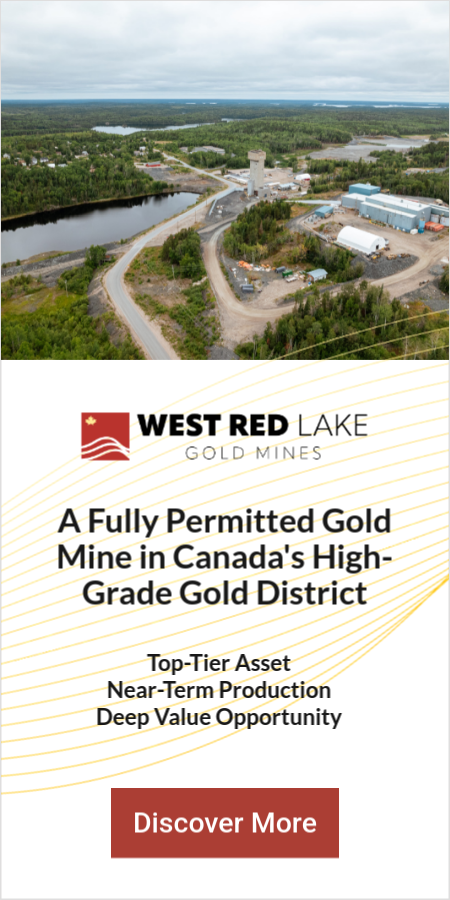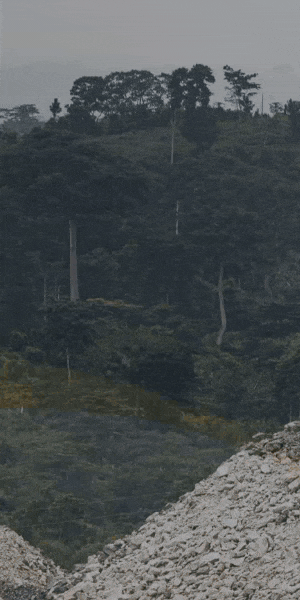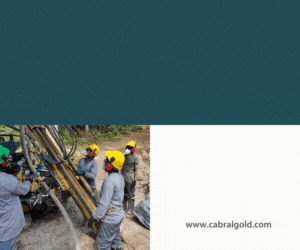West Red Lake Gold: High-Grade Expansion Strategy Targets 100,000-Ounce Production Milestone

West Red Lake Gold drills Rowan for 100k oz target. Madsen producing 50k oz, Rowan adds 35k oz at 8.0 g/t. Gold at US $4,275/oz forecast. Q1 results key catalyst.
- West Red Lake Gold Mines (TSXV: WRLG) has launched a fully funded 5,000-metre drill program at its Rowan Project, targeting resource conversion and mine life extension with previous intercepts exceeding 20 g/t Au.
- Rowan's July 2025 Preliminary Economic Assessment projects 35,230 ounces of annual gold production over a 5-year mine life at an average grade of 8.0 grams per tonne, with existing resources already 63% Indicated by tonnes and 72% by ounces.
- The company targets a combined production rate of up to 100,000 ounces per year from integrated Madsen-Rowan operations, leveraging shared infrastructure through a planned joint Pre-Feasibility Study expected in 2026.
- Gold price forecasts have reached historic highs, with analysts projecting US $3,400/oz for 2025 and US $4,275/oz for 2026, creating exceptional margin potential for high-grade producers like West Red Lake Gold.
- Operating in Ontario's Tier-1 Red Lake jurisdiction with Advanced Exploration permits targeted for 2027, the company benefits from the new One Project, One Process framework designed to halve mine permitting review times.
Introduction: Positioning for Gold's Structural Rally
Gold markets have entered unprecedented territory. A recent poll of 39 analysts and traders forecasts gold averaging US $3,400 per ounce in 2025, rising to US $4,275 per ounce in 2026, the first time consensus projections have crossed the US $4,000 threshold. This 54% surge in 2025 marks gold's strongest annual performance since the 1979 oil crisis, driven by geopolitical uncertainty, central bank accumulation, and structural concerns about currency stability.
Against this backdrop, investors are scrutinizing which gold producers can capitalize on elevated prices through operational leverage and resource growth. Companies with high-grade deposits in established mining districts, existing infrastructure, and near-term production catalysts stand to benefit disproportionately. West Red Lake Gold Mines, a Red Lake district operator advancing its Madsen-Rowan Gold Complex, presents precisely this profile with its October 28, 2025 announcement of a strategic drilling campaign at Rowan.
The company's 5,000-metre drill program represents more than routine exploration, marking a systematic infill and conversion effort to upgrade resources and extend mine life under an integrated development model. For investors seeking exposure to gold's structural bull market through operationally disciplined, resource-expanding vehicles with clear production pathways, West Red Lake Gold's development trajectory warrants attention.
Company Overview: Building Red Lake's Next 100,000-Ounce Producer
West Red Lake Gold operates within Ontario's Red Lake Greenstone Belt, one of the world's most prolific gold districts with over 30 million ounces of historic production. The company's flagship Madsen Mine is being repositioned for restart with an existing 800 tonnes-per-day processing facility, while approximately 80 kilometres by road lies the Rowan Project, a high-grade satellite deposit that has emerged as a strategic ore source.
According to the July 2025 Preliminary Economic Assessment, Rowan demonstrates robust preliminary economics for an underground mine producing an average of 35,230 ounces per year over a 5-year mine life at an average grade of 8.0 grams per tonne gold. The deposit is characterized as a high-grade, relatively wide, nearly vertical system that starts at surface, with mineralization hosted in multiple parallel quartz-carbonate veins containing visible gold.
The company's strategic vision extends beyond individual project development. President and CEO Shane Williams articulated this growth trajectory, stating that success in advancing Rowan through permitting and development could position West Red Lake Gold to target a combined production rate of up to 100,000 ounces per year in Red Lake in the coming years. This integrated approach minimizes capital requirements by utilizing existing Madsen mill infrastructure rather than constructing new processing facilities, a critical competitive advantage in capital-constrained markets.
Key Development: Strategic Drill Program Targets Resource Conversion
The October 2025 drill program represents a pivotal inflection point for West Red Lake Gold. The fully funded 5,000-metre HQ diameter diamond drilling campaign pursues three primary objectives designed to advance Rowan toward pre-feasibility status. First, conversion drilling will focus on Veins 001 and 004 to upgrade Inferred resources to Indicated category, with these veins accounting for the majority of PEA production tonnes and approximately 63% of tonnes and 72% of ounces already classified as Indicated.
Second, infill drilling will target Veins 006b and 013 to provide data for potential inclusion in the planned combined Pre-Feasibility Study. Integration of these veins could extend mine life at Rowan and allow ore extraction to begin approximately 6 months sooner due to closer proximity to the access portal, potentially improving the project's net present value. These veins represent low-hanging fruit for resource expansion as they were not included in the initial PEA mine plan due to sparse historic assaying.
Third, the program will collect physical core material needed to complete advanced metallurgical and geotechnical studies ahead of the planned combined PFS. CEO Shane Williams emphasized that drilling at Rowan aims to increase confidence in the existing mineral resource while providing material for technical studies that will inform the joint feasibility assessment with Madsen. The program commenced on October 28, 2025 and is expected to continue through Q1 2026, with initial assay results targeted for early Q1.
Strategic Significance: High-Grade Leverage in a US $4,000 Gold Environment
The intersection of high-grade geology and exceptional gold prices creates compelling economics for West Red Lake Gold. At Rowan's resource estimate of 8.0 grams per tonne average grade, the deposit's grade profile stands approximately four times higher than typical Canadian gold deposits. In a US $4,275 per ounce gold environment, the 2026 consensus forecast, each tonne of Rowan ore would contain roughly US $1,100 in contained gold value before processing, compared to US $275 for a conventional 2 g/t deposit.
This grade advantage is particularly significant given that the July 2025 Rowan PEA used a conservative long-term gold price of US $2,500 per ounce, approximately $1,500 per ounce lower than current prices. At today's gold prices exceeding US $4,000 per ounce, the project economics improve dramatically, with substantially higher margins and shorter payback periods than originally modeled. High-grade deposits typically achieve lower all-in sustaining costs per ounce due to reduced tonnes requiring processing, lower energy consumption per ounce produced, and reduced waste handling requirements.
The strategic value extends beyond single-project economics. The planned combined Pre-Feasibility Study for Madsen and Rowan will evaluate potential development using shared infrastructure and integrated mine planning, with the goal of identifying operational and economic synergies. According to company communications, Madsen is expected to operate in 2026 as a high-grade mine delivering approximately 50,000 ounces of gold per year, with Rowan projected to add another 35,000 ounces annually, supporting the company's 100,000-ounce combined production target.
Current Activities: Funded Exploration & Production Ramp-Up
West Red Lake Gold maintains full funding for the current drilling program at Rowan, supported by institutional participation and recent equity inflows. The company's balance sheet strength enables the drill campaign without immediate dilutive financing, preserving shareholder value during this critical resource conversion phase. This financial discipline distinguishes West Red Lake Gold in a junior mining sector where many explorers struggle with funding continuity.
Beyond Rowan drilling, the company has achieved significant operational milestones at Madsen. According to analyst commentary, West Red Lake Gold resumed operations at Madsen ahead of schedule and is actively ramping up production, with the mine on track to reach targeted output levels in early 2026. This operational momentum provides cash flow to support ongoing development activities while derisking the company's transition from explorer to producer.
The company benefits from Red Lake's established infrastructure including road access, grid power, and skilled workforce availability. West Red Lake Gold has accumulated almost three years of baseline environmental data at Rowan and is advancing permitting efforts toward Advanced Exploration status, which is required for bulk sample extraction. The Advanced Exploration permit is targeted for approval in 2027, supported by Ontario's new One Project, One Process mine permitting framework that aims to cut review times in half for Designated Projects.
Geological & Exploration Context
Rowan's geological setting within the Red Lake Greenstone Belt provides significant exploration upside. The project lies in a structurally complex deformation zone of the Balmer Assemblage, the same geological package hosting numerous historic high-grade producers. Gold mineralization is associated with quartz-carbonate veining hosted primarily within altered basalt and ultramafic units, displaying characteristics similar to other successful Red Lake deposits.
This geological consistency with other Red Lake deposits suggests potential for depth extensions and parallel zone discoveries. Recent structural modelling has identified underexplored parallel vein corridors with potential to expand strike length beyond current mineralization boundaries. The deposit is characterized as nearly vertical and starting at surface, features that promote efficient mining with lower development costs compared to deeply buried or flat-lying orebodies.

The updated 2025 geological framework represents years of compilation work integrating historic data with modern geophysical interpretation. Systematic testing of this model through the current drill program represents the first opportunity to validate resource expansion potential under refined targeting criteria. Success could establish Rowan as a district-scale system rather than isolated deposit, fundamentally altering resource growth trajectory and production life potential.
Market Context & Gold Price Outlook
The analyst poll underlying current gold forecasts reflects fundamental shifts in market structure. Research analysts cite geopolitical uncertainty, central bank reserve diversification, and strong exchange-traded fund inflows as primary drivers. Critically, researchers note a transition from short-term shock response to structural concerns about currencies and financial system confidence, suggesting sustained demand rather than cyclical spike.
Gold's 54% surge in 2025 has already established year-to-date averages around US $3,281 per ounce, reflecting the rally's depth and consistency. The forecast progression from US $3,400 in 2025 to US $4,275 in 2026 indicates continued momentum, though analysts acknowledge pace may moderate from 2025's exceptional gains. According to analyst commentary from October, gold prices have risen 123% over the past two years, outpacing most other asset classes during a period characterized by declining interest rates and geopolitical instability.
Risk factors remain, including potential safe-haven premium reduction if economic growth strengthens, while elevated interest rates or dollar strength might challenge gold's relative appeal. However, the consensus crossing the US $4,000 threshold for the first time suggests baseline expectations have fundamentally reset higher, creating favourable conditions for well-positioned producers with near-term production catalysts like West Red Lake Gold.
Near-Term Catalysts & Timeline
Multiple value inflection points emerge over the next 18 months for West Red Lake Gold. First-quarter 2026 drilling results from the Rowan program represent the immediate catalyst, with potential to confirm resource conversion success and validate additional vein systems for mine plan inclusion. Positive assays would likely prompt analyst upgrades and increased institutional attention, particularly if results support the company's 100,000-ounce combined production narrative.
Mid-2026 brings the expected combined Pre-Feasibility Study incorporating both Madsen and Rowan under an integrated development scenario. This study will evaluate shared infrastructure utilization and identify operational synergies, representing the transition from separate project assessments to unified production planning. The PFS will provide definitive capital cost estimates, production schedules, and economic returns that form the basis for project financing and construction decisions.
Permitting progress continues in parallel, with Advanced Exploration status targeted for 2027 under Ontario's One Project, One Process framework. At Madsen, production ramp-up toward targeted 50,000-ounce annual output in early 2026 provides operational cash flow and derisks the company's producer status. CEO Shane Williams captured the excitement around these catalysts, stating that drilling at Rowan aims to increase confidence in the existing mineral resource while providing physical core material needed for advanced studies ahead of the combined PFS.
The Investment Thesis for West Red Lake Gold
- Consider exposure to West Red Lake Gold as a high-grade leverage play if gold sustains above US $3,800/oz through 2026. The company's 8.0 g/t average grade at Rowan offers disproportionate operating leverage compared to bulk-tonnage operations in elevated price environments.
- Monitor Q1 2026 drill results for successful resource conversion and Vein 006b/013 confirmation. Positive assays upgrading Inferred to Indicated resources and validating additional veins would strengthen the path toward 100,000-ounce combined annual production.
- Evaluate West Red Lake Gold's capital efficiency advantage through its toll-milling strategy. Leveraging Madsen's existing 800 tpd infrastructure for Rowan ore processing eliminates construction of new mill facilities, significantly reducing capital intensity.
- Assess jurisdictional risk as substantially lower than frontier mining locations. Ontario's regulatory stability, new expedited permitting framework, infrastructure access, and community relationships provide development certainty premium.
- Track 2026 combined Pre-Feasibility Study for Madsen-Rowan integration. This study will formalize operational synergies and provide definitive economics supporting the 100,000-ounce production target, representing a key valuation catalyst.
- Consider portfolio allocation to producing junior gold developers with near-term growth catalysts. West Red Lake Gold's position with Madsen already in production and Rowan advancing through permitting provides multiple near-term value inflection points.
The investment case for West Red Lake Gold centres on asymmetric upside in a structurally supportive gold environment. With consensus forecasts projecting US $4,275 per ounce gold in 2026, high-grade deposits in established jurisdictions offer exceptional margin potential. Rowan's 8.0 g/t average grade, combined with Madsen's operating mill infrastructure and systematic resource conversion program, creates operational leverage that differentiates from bulk-tonnage producers requiring massive capital deployment.
Red Lake's Tier-1 jurisdiction status cannot be overstated. Infrastructure access, regulatory stability through the new One Project, One Process framework, skilled labour availability, and community relationships reduce development risk compared to frontier locations. West Red Lake Gold's ability to fund current programs from balance sheet strength while maintaining exploration and production momentum demonstrates financial discipline often absent in junior developers transitioning to producer status.
The 5,000-metre drill program represents a relatively low-cost test with potentially transformative outcomes. Successful resource conversion, confirmation of additional vein systems, and validation of the integrated Madsen-Rowan production model would fundamentally enhance the company's growth profile toward its 100,000-ounce annual production target. In a market where gold has achieved its strongest annual performance in over 40 years, West Red Lake Gold presents a compelling profile during a pivotal expansion phase, with clear catalysts spanning Q1 2026 drill results, mid-2026 feasibility study completion, and early 2026 Madsen production targets.
TL;DR
West Red Lake Gold Mines has launched a fully funded 5,000-metre drill program at Rowan targeting resource conversion and mine life extension, with the project projected to produce 35,230 ounces annually at 8.0 g/t grade. Combined with Madsen's targeted 50,000-ounce production, the company aims for 100,000 ounces per year in Red Lake. With gold forecast at US $4,275/oz for 2026 and existing mill infrastructure enabling low-capital expansion, West Red Lake Gold offers asymmetric upside through operational leverage in a Tier-1 jurisdiction. Q1 2026 drill results and mid-2026 combined PFS represent key near-term catalysts.
FAQs (AI-Generated)
Analyst's Notes




Subscribe to Our Channel
Stay Informed



































